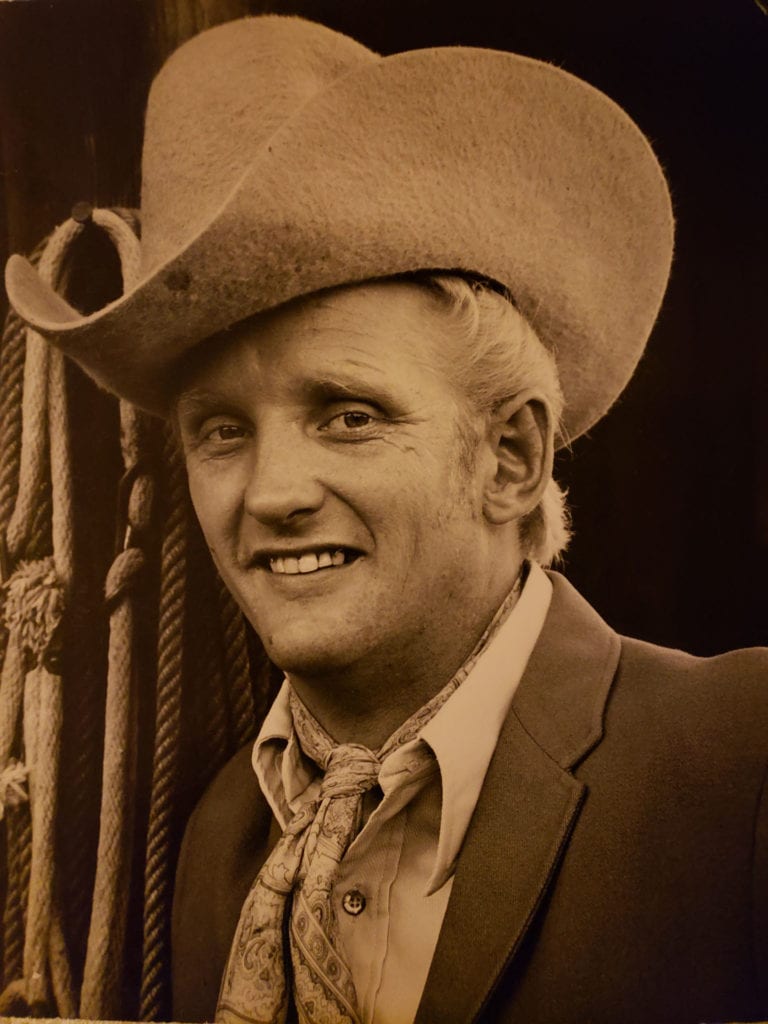Enid native Jim Hill had his own horse before the age of two. And upon meeting the iconic rodeo clown Andy Womack, he was enamored with the whole family’s rodeo lifestyle.
So, by age four, Hill decided to be a rodeo clown. Holding onto his dream, he rode in rodeo events and launched a 36-year, hair-raising career.
But what does a rodeo clown do, exactly? Bull riders have a rope wrapped around one hand, with the other end wrapped around the bull. Sometimes the rider gets tangled in the rope – and that’s where Hill and other rodeo clowns come in.
“The rider can get pinned; the clown goes in and gets him free,” says Hill. “To untie the guy that’s hung up … there isn’t anything that compares with it.”
After a 1976 incident, Hill was pronounced dead.
“I was 26. The last thing I remembered was locking arms over the bull’s horns,” he says. He’s got plenty of stories like this.
“Another time, the bull threw me in the air, and waited for me to come down. Twice! The pickup rider got a rope and pulled him off, or he’d have done it a third time. It’s just another day at the office.”
Hill moved on, spending 11 years as a barrel man, distracting bulls from inside a barrel so riders could escape.
“Working the barrel, I had broken noses and black eyes from being too slow,” he says with a chuckle. “One bull got his head stuck in the barrel and I pushed it out.”
While he worked rodeos in over 40 states, Canada and Mexico, Hill’s family stayed home.
“I had a dog, a camper and pickup truck,” he says.
But he totaled over 80 broken bones, including 53 rib breaks, and titanium alloy implants in both knees. Riding a buffalo cost him his scalp, leaving two rows of stitches and 28 staples on his head. But he’s undaunted.
“As long as I wake up hurting, I know the good Lord gave me another day,” he says. “It was the ultimate rush. If I could survive, I’d be on the road now.”
And Hollywood called. Hill fought bulls in the 1972 rodeo movie Junior Bonner starring Steve McQueen; the 1974 Oscar-winning documentary The Great American Cowboy; and the Nat Geo documentary The American Bullfighter.
Hill earned bachelor’s and master’s degrees from Phillips University, although he sometimes left school for the rodeo circuit. For 23 years, he taught high school and college during the school months, with rodeo life restricted to the summer. Teaching in Navajo and Choctaw schools, and at Southeastern Oklahoma State University, he says he “encouraged my students to learn their native language. If you lose that, then you lose your culture, then your individual identity.”
Overall, Hill worked five years in amateur rodeo, 10 in the Rodeo Cowboys Association, and 21 in the Professional Rodeo Cowboys Association. In 1997, Hill nabbed the Andy Womack Memorial Award for rodeo clowns. He was interviewed for the 2009 Rodeo Historical Society Oral History Project in partnership with OKC’s National Cowboy and Western Heritage Museum. And in November of last year, he was inducted into the All Cowboy and Arena Champions Hall of Fame.
Now, Hill attends Emmanuel Enid Church and lives in Major County with his horses and mules.
“I had such joys in the classroom,” he says. “And I got hooked on rodeo.”




























